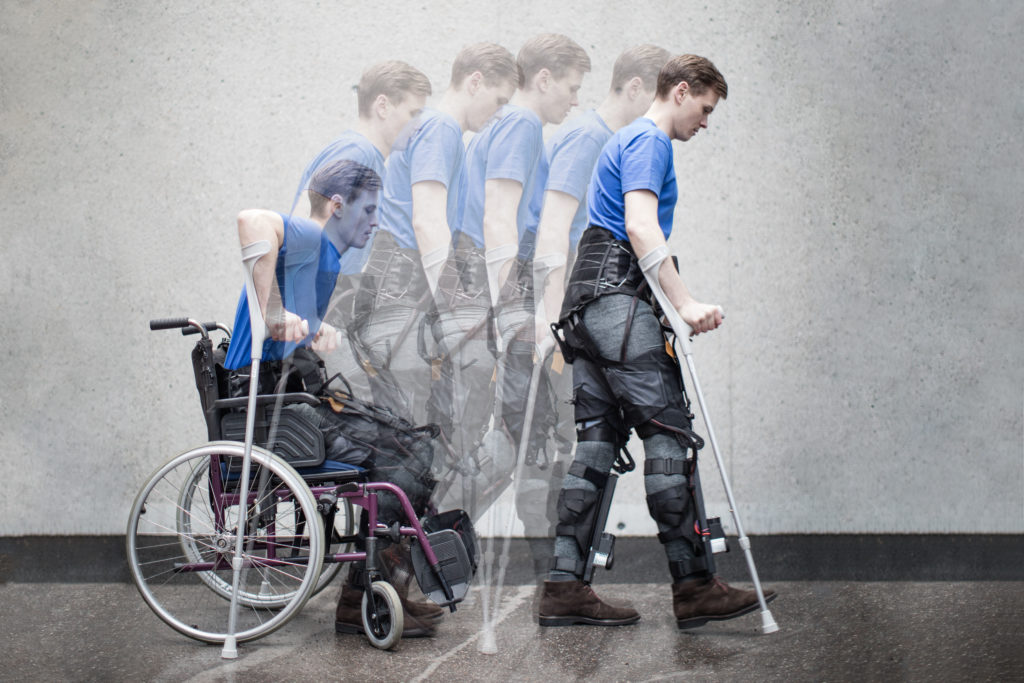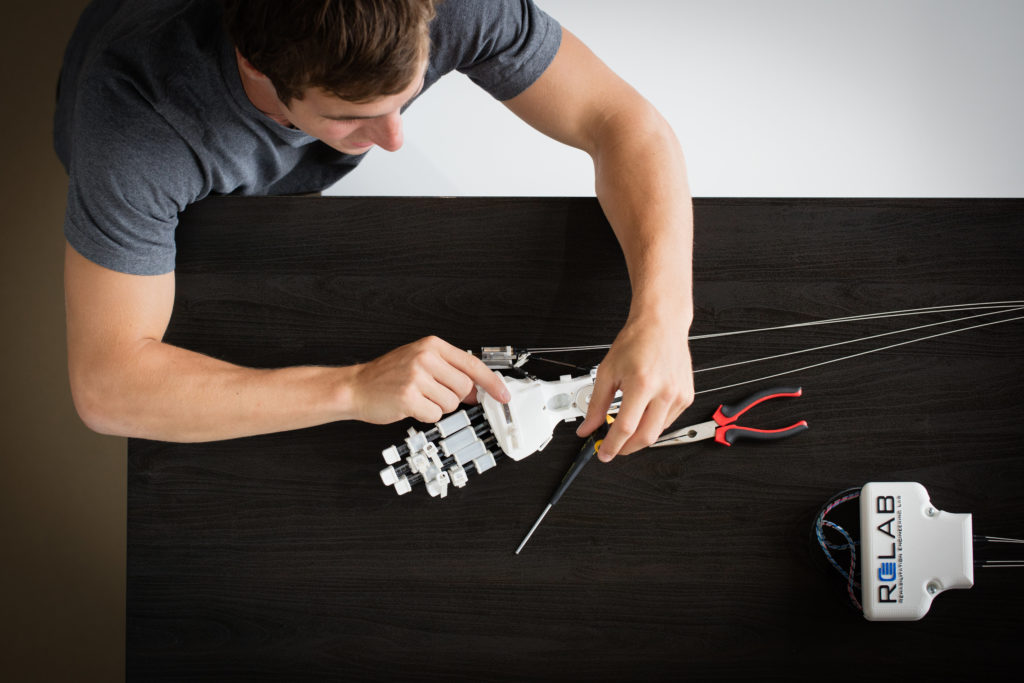Soft exoskeletons
Myosuit
Developed by Robert Riener’s group at ETH Zurich and by the spin-off Myoswiss, the myosuit is a textile-powered lower-limb exoskeleton named which provides assistance to leg movements during sit-to-stand transfers, walking and stair climbing.
The Myosuit is a new approach to exoskeleton technology designed to support people with leg weakness. It supports rehabilitation training and activities of daily life such as walking, standing, sitting transfers, or stair negotiation. It is significantly simpler, lighter, and cheaper alternative to what is available on the market today.
The robotic suit is powered by an exchangeable battery that lasts between 3 and 4 hours of regular use in a single charge; this makes the Myosuit completely untethered and autonomous.
A recent study has shown that it can be easily incorporated into standard physiotherapy sessions and bring clear benefits to patients with diverse walking impairments.

Hand exoskeletons
During its second phase (2014-2018), NCCR Robotics has supported the development of two hand exoskeletons – one in Roger Gasserts’ lab at ETH Zurich, and one in José Millàn’s former lab at EPFL (Millàn has since moved at the University of Austin in the USA).
At ETH, the result is tenoexo, a compact and lightweight hand exoskeleton. The EMG-controlled device assists patients with moderate to severe hand motor impairment during grasping tasks in rehabilitation training and during activities of daily living. Its soft mechanism allows for grasping of a variety of objects. Thanks to 3D-rapid prototyping, it can be tailored to the individual user.
At EPFL, the work resulted in mano, a novel hand exoskeleton with the main purpose of assisting independence and promoting intensive use, both within clinical and domestic settings.
The system was iteratively designed, developed and tested in collaboration with partner clinics, including healthcare professionals (such as neurologists, occupational therapists, ergotherapists, physiotherapists), and with users who suffered from motor disabling conditions (such as e.g. spinal-cord injuries, amyotrophic lateral sclerosis, cerebrovascular accidents and cerebral palsies). The project is now being carried forward in Auke Ijspeert’s lab.
All exoskeletons leverage the soft, wearable sensors developed by Stéphanie Lacour at EPFL to assist and monitor the human body both in the context of the hospital and at home.
